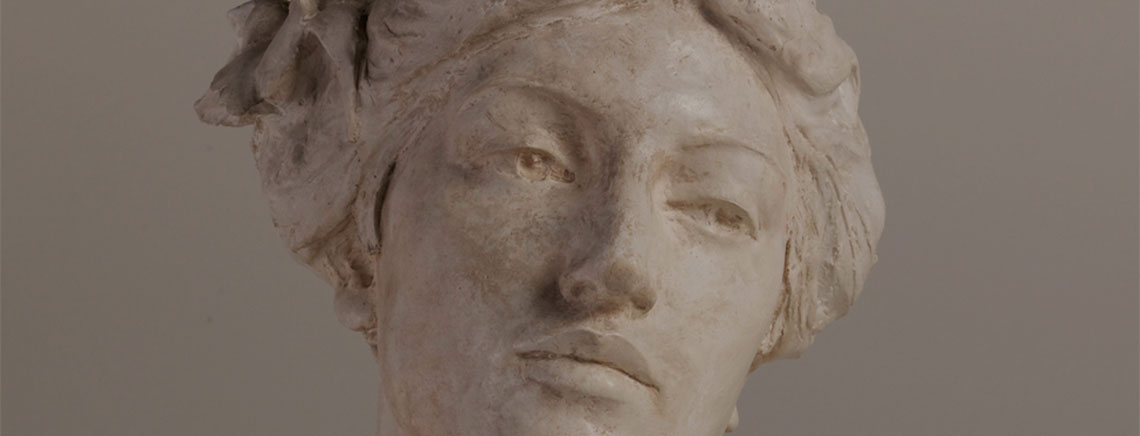Chesterwood Celebrates
Stockbridge is in the midst of celebrating three of its most significant institutions, all of which are observing 50th anniversaries.
The Red Lion Inn, a mainstay of Berkshires travelers since the 18th century, is marking the 50 years since its preservation by the Fitzpatrick family and its growth into a nexus for luxury accommodations in the Berkshires.
The Norman Rockwell Museum, which preserves the legacy of one of America’s favorite illustrators, was opened in 1969 and has a summer series of events planned to marked its Golden Anniversary.
And not far away, tucked in the bucolic countryside at Glendale, another iconic American artist—sculptor Daniel Chester French—is being celebrated on the 50th anniversary of his country estate being taken over by National Trust for Historic Preservation.
One of the most prolific of American sculptors, French produced more than 75 public works, two of them—the Lincoln Memorial in Washington DC .and Minute Man who stands vigil at Concord Bridge—so familiar to American tourists that they are a seamless representation of American pride.
Fittingly, for a man who sculpted representations of many national heroes, French was born in 1850, 51 years after the death of George Washington—whom he sculpted in 1900—and 15 years before the death of Lincoln.
He was a resident of Concord MA and received the town’s commission to create the Minute Man, dedicated in 1875, some 100 years after the “shot heard ’round the world,” when the artist was only 25 years old.
His seated Lincoln, perhaps his most iconic work, was created in his Chesterwood studio a half century later and dedicated in Washington DC in 1922. In the 50 years between the Minute Man and Lincoln, his artistry touched on such men of note as Ulysses S. Grant; his friend and mentor, Ralph Waldo Emerson, and Dr. Thomas Gallaudet, founder of the first free school for the deaf in America.
Forever entwined with Lincoln mythology, French’s contribution to the Great emancipator’s legacy will be commemorated this summer with an observance of Lincoln’s 210th birthday.
A special exhibit will include books, broadsides, letters and prints—and a life mask taken in 1860—all documenting Lincoln’s life and highlighting the Lincoln-related work done by French.
All materials are from the Chapin Library and from the Chapin’s Chesterwood Archives, once held at French’s home in Stockbridge.
Also published this year at the behest of Chesterwood is the book, Monument Man by noted Lincoln historian, Harold Holzer. The book is a definitive biography of French and, according to Chesterwood Executive Director Donna Hassler, its inspiration came from the oft-repeated question from visitors, “How did he create the Lincoln Memorial.”
Chesterwood has been a center for the arts since 1897 when, impressed by the beauty of the Berkshires, French decided to create a summer retreat there. He commissioned his friend and colleague, Henry Bacon, to design a studio. French thought the best site would be where a barn once stood, offering a majestic view of Monument Mountain.
Construction began in April 1898 but, impatient to get underway, French started his work there only three months later before the building was even complete. By August 6th he was receiving callers.
And what a studio it was! As was a standard for fashionable artist’s studios of French’s time, it included a reception room as a gathering place where business visitors were received. It was there, also, that French relaxed by drawing and painting oil or pastel portraits of friends, family or neighbors in the north light of the French windows.
The family’s afternoon tea took place there when inclement weather precluded the use of the south-facing piazza.
The main work space in the studio is a 30-by-29-foot room with 26-foot-high walls, providing ample space for heroic equestrian models. Along with provisions for natural lighting—important in determining how his works would look in their final setting—French had other rigorous requirements. To be able to view work in progress en plein air, he devised a studio floor part of which was a standard-gauge flatcar that could be pushed outdoors on tracks. French could thus judge his works’ effect in the open. The artist could gain perspective on his work by standing down in the field to get the appropriate viewing distance.
It was in the adjacent casting room that clay models were cast in plaster for further sculptural development and later casting in bronze. Plaster casts and discarded clay models were lowered through trap doors to be dealt with in the cellar.
Chesterwood was an artist’s home and its fine arts collection includes the of art works of Daniel Chester French—in fact, one of the largest collections of a single sculptor in the country. Housed in the studio, residence, barn gallery and the newly opened Collections Gallery are almost 500 statues, 23 oil paintings, and 13 portrait pastels—all by French. Plastilene models and plaster casts for major sculptural commissions enable the collection to illustrate French’s working methods and creative process.
The Chesterwood collections also include furnishings such as European and American furniture, textiles such as rugs, curtains and bed coverings, and decorative arts objects—place settings, silver, glass, knick-knacks, table-top sculpture, and even a brass menorah. The objects span six centuries and give insight to the family’s taste and lifestyle.
From time to time, French would display his own works as well as works by his artist friends on the grounds at Chesterwood, making it one of the earliest venues in the United States to showcase large-scale works in an outdoor setting. It is a tradition that has continued under the National Trust. Since 1978 almost 600 emerging and established artists’ works have been exhibited in the annual sculpture show, Contemporary Sculpture at Chesterwood.
Chesterwood is open every day, May 25th-October 27th from 10 AM-5PM. Learn more by clicking the link below.

